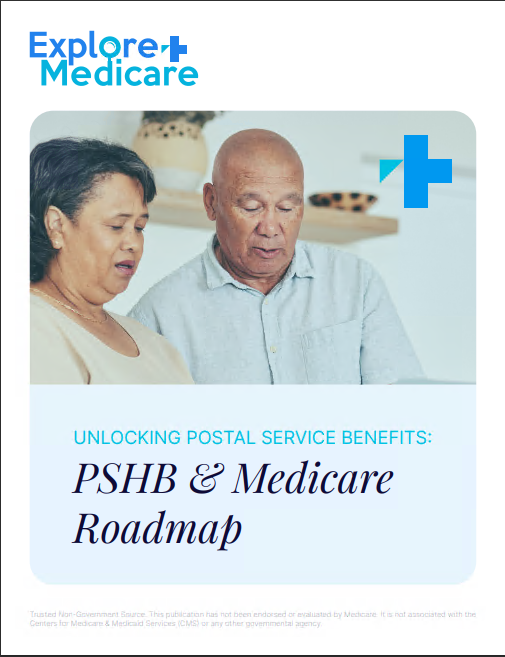Key Takeaways
-
Medicare has multiple parts and timelines that often create confusion, especially around enrollment and coverage coordination.
-
Understanding your options, costs, and responsibilities can help you avoid late penalties and coverage gaps.
Why Medicare Feels Overwhelming
Let’s be honest—Medicare can be confusing. You’re not alone if you’ve found yourself asking what Part B actually covers or whether you need to sign up for Part D. The program is full of moving parts, each with its own rules, deadlines, and cost structures.
Even though Medicare has been around for decades, many people still feel unprepared when the time comes to enroll. The good news is, it’s completely normal to feel this way—and it’s something you can absolutely work through with the right information.
Understanding the Building Blocks of Medicare
Medicare is split into several parts, and each one covers different aspects of your healthcare:
Medicare Part A – Hospital Insurance
-
Covers inpatient hospital stays, skilled nursing facility care, hospice, and some home health services.
-
Most people don’t pay a premium for Part A if they or their spouse worked at least 40 quarters (10 years).
-
In 2025, the inpatient hospital deductible is $1,676 per benefit period.
Medicare Part B – Medical Insurance
-
Covers doctor visits, outpatient services, preventive care, and durable medical equipment.
-
Comes with a monthly premium, which in 2025 is $185.
-
There is also an annual deductible of $257 before coverage begins.
Medicare Part D – Prescription Drug Coverage
-
Helps pay for prescription medications.
-
Plans vary in terms of premiums, drug formularies, and pharmacies in-network.
-
In 2025, the deductible can be as high as $590, and there’s a $2,000 cap on out-of-pocket costs.
Medicare Part C – Also Known as Medicare Advantage
-
Offered by private companies that contract with Medicare.
-
Combines Part A and Part B and often includes Part D.
-
Plans may have different provider networks, coverage rules, and cost structures.
The Enrollment Periods You Can’t Afford to Miss
One of the biggest sources of confusion around Medicare is when you’re supposed to enroll. Missing your enrollment period can lead to lifelong penalties and delays in coverage.
Initial Enrollment Period (IEP)
-
Lasts for 7 months: 3 months before, the month of, and 3 months after your 65th birthday.
-
Enroll here if you’re not getting health insurance through an employer.
General Enrollment Period (GEP)
-
Runs from January 1 to March 31 each year.
-
For those who missed their IEP and don’t qualify for a Special Enrollment Period.
-
Coverage starts July 1, and late penalties may apply.
Special Enrollment Periods (SEPs)
-
Triggered by life events like losing job-based coverage, moving, or qualifying for Medicaid.
-
Timeframes vary depending on the event.
Medicare Advantage & Part D Open Enrollment
-
Occurs every year from October 15 to December 7.
-
This is your chance to switch, join, or drop a Medicare Advantage or Part D plan.
Medicare Advantage Open Enrollment Period (MA OEP)
-
January 1 to March 31 each year.
-
Only applies if you’re already enrolled in a Medicare Advantage plan.
-
You can switch to another Advantage plan or go back to Original Medicare.
What Happens If You Enroll Late
Late enrollment in Medicare can cost you—literally. These penalties don’t go away and can follow you for life.
-
Part B late enrollment penalty: 10% increase in your monthly premium for each full 12-month period you could’ve had Part B but didn’t.
-
Part D late enrollment penalty: Calculated as 1% of the national base premium times the number of months you didn’t have coverage.
These penalties are permanent and apply as long as you have Medicare coverage, so timely enrollment is critical.
Do You Need All the Parts?
Not everyone needs to sign up for every part of Medicare right away. If you’re still working and have employer coverage, you might not need Part B or Part D until later.
Here’s how to think about it:
-
If your employer has 20 or more employees, your employer plan typically pays first, and you can delay Part B without penalty.
-
If your employer has fewer than 20 employees, you should enroll in Part B at 65, because Medicare pays first.
-
Delaying Part D? Make sure your employer drug coverage is considered “creditable” by Medicare to avoid penalties later.
Coordinating Medicare with Other Coverage
Many people have additional coverage through an employer, retiree plan, or union. Medicare coordination rules determine which plan pays first:
-
Medicare as primary: If your other coverage is secondary, Medicare pays first and the other plan picks up remaining costs.
-
Employer plan as primary: Usually happens when you’re still actively working for a large employer.
-
TRICARE, VA, FEHB: These have specific rules for how they work with Medicare, especially once you retire.
Make sure to check with your benefits administrator to confirm how your current insurance coordinates with Medicare.
Understanding Medicare Costs
Medicare is not free. Even if you paid into the system through payroll taxes, you’ll still be responsible for monthly premiums, deductibles, copayments, and coinsurance.
Here’s a breakdown of general costs for 2025:
-
Part A premium: $0 for most, but up to $518/month if you paid fewer than 30 quarters.
-
Part B premium: $185/month for most people.
-
Part D deductible: Up to $590/year.
-
Out-of-pocket cap for Part D: $2,000 annually.
If you have Medicare Advantage, costs can differ based on the plan. Original Medicare doesn’t have an out-of-pocket maximum, so many people add a Medigap plan to help with cost-sharing.
Medigap: The Supplemental Puzzle Piece
Medigap, or Medicare Supplement Insurance, helps cover the “gaps” in Original Medicare like deductibles and coinsurance. These plans are standardized, but premiums and availability vary by location and insurer.
Important things to remember:
-
You must have Part A and Part B to enroll in a Medigap plan.
-
Medigap does not include drug coverage—you’ll still need a separate Part D plan.
-
The best time to enroll in Medigap is during your 6-month Medigap Open Enrollment Period, which starts when you turn 65 and are enrolled in Part B. After this, you may be subject to medical underwriting.
Staying Informed Through Annual Notices
Each fall, you’ll receive an Annual Notice of Change (ANOC) if you’re enrolled in a Medicare Advantage or Part D plan. This letter outlines changes to:
-
Premiums
-
Deductibles
-
Copayments
-
Drug formularies
-
Provider networks
Review it carefully. Even if you’re happy with your current plan, small changes can have a big impact on your coverage or out-of-pocket costs.
Medicare Is Not One-Size-Fits-All
The right Medicare path depends on your health, budget, and personal preferences. Some people prioritize provider choice and nationwide coverage (Original Medicare), while others prefer bundled services and extra benefits (Medicare Advantage).
Factors to weigh:
-
Do you travel often?
-
Do you need access to a wide network of doctors?
-
Are you managing multiple chronic conditions?
-
What’s your prescription drug usage like?
You don’t have to figure it all out alone, but understanding these variables helps you ask the right questions.
Where to Turn When You Need Help
Medicare decisions carry long-term consequences. Whether you’re enrolling for the first time or considering a plan switch, getting personalized help makes a difference.
You can:
-
Contact your local State Health Insurance Assistance Program (SHIP)
-
Work with a licensed agent who understands the Medicare landscape
-
Use the Medicare Plan Finder tool to compare coverage options
Just be cautious of unsolicited calls or mailers promising free perks or limited-time deals—they often come with strings attached.
You’re Not Alone—And There’s Help Available
The complexity of Medicare can feel overwhelming, especially with so many deadlines, costs, and plan types to consider. But you’re not expected to be an expert overnight. You’re allowed to have questions. You’re allowed to feel confused.
The key is to take things step by step, stay informed, and seek support when needed. If you’re unsure about the best course of action for your situation, get in touch with a licensed agent listed on this website for professional guidance.









